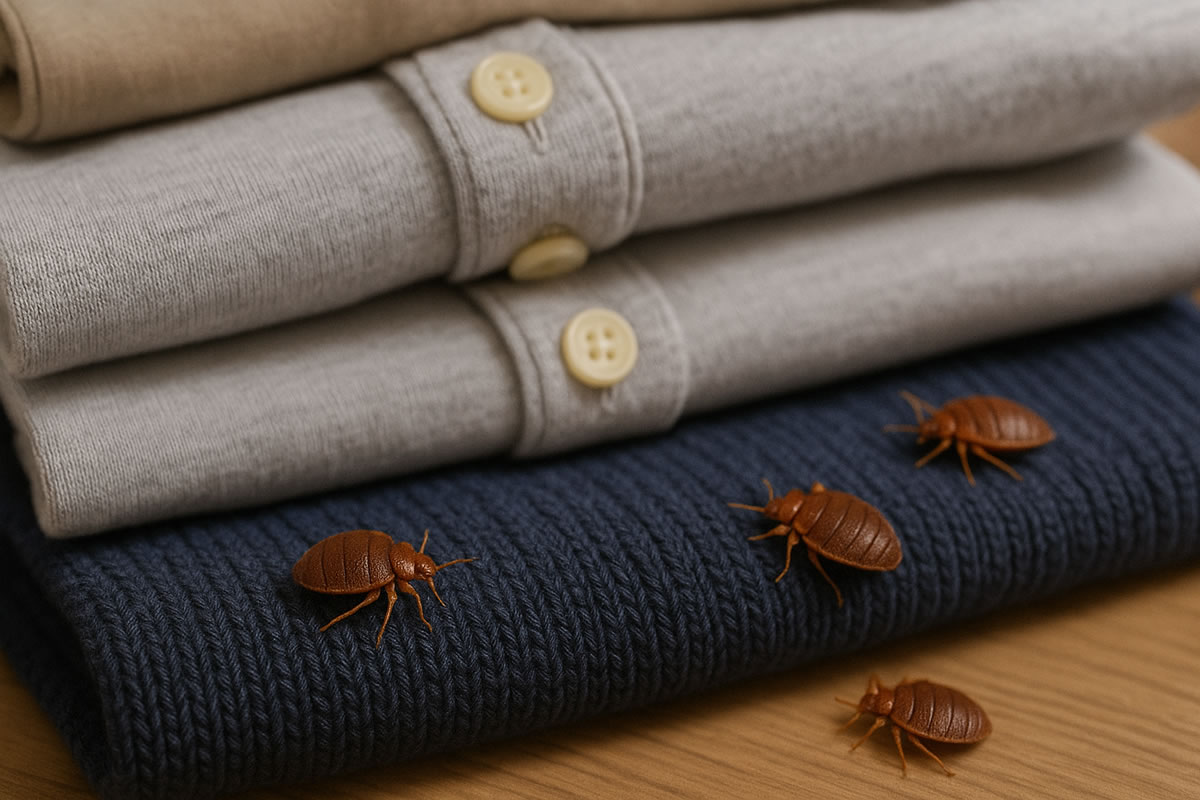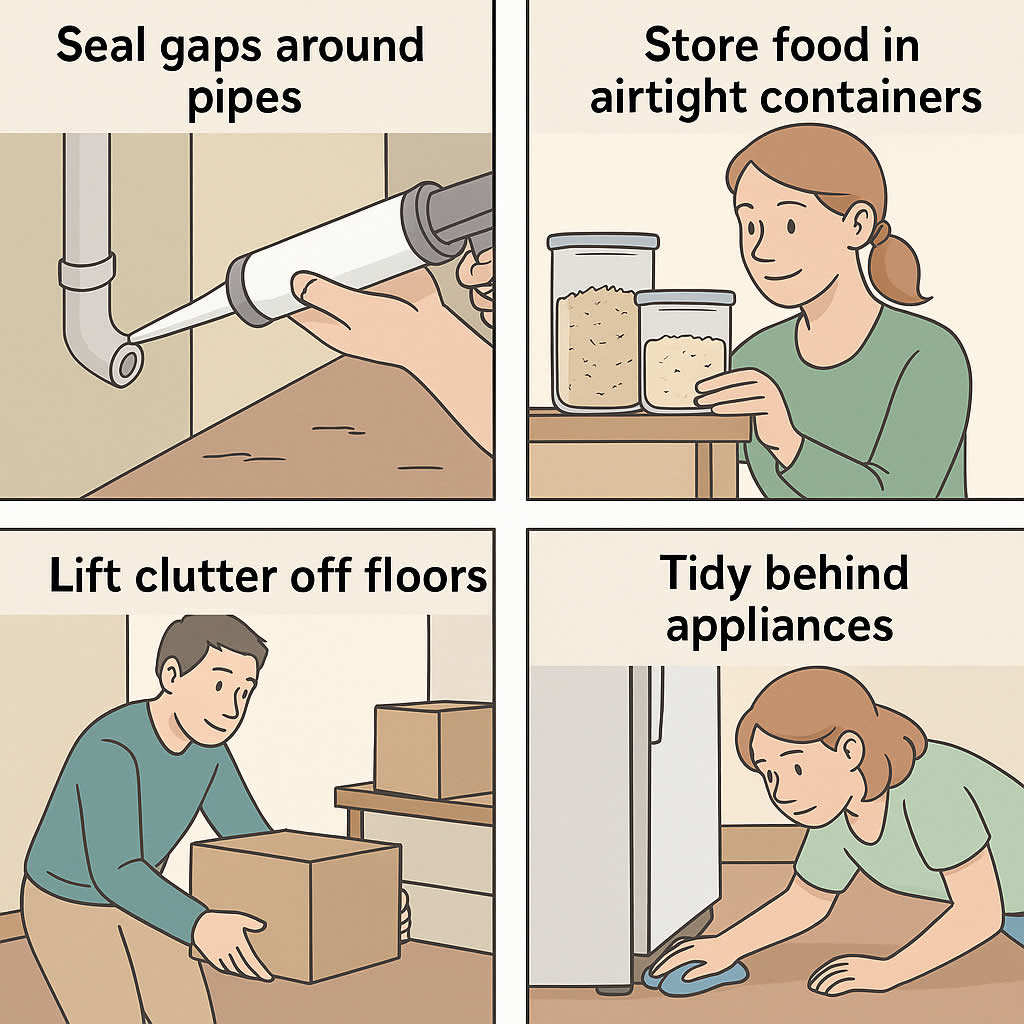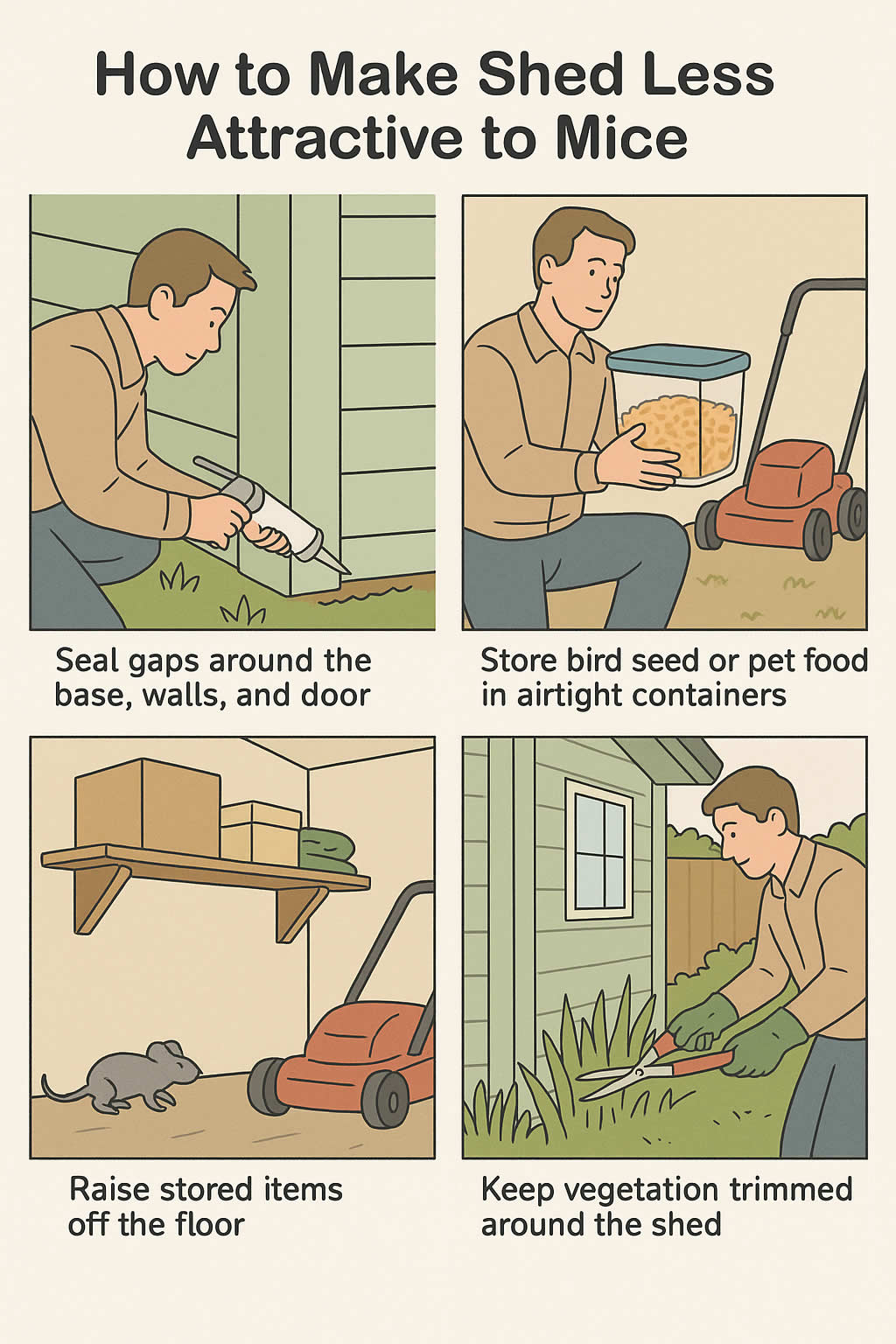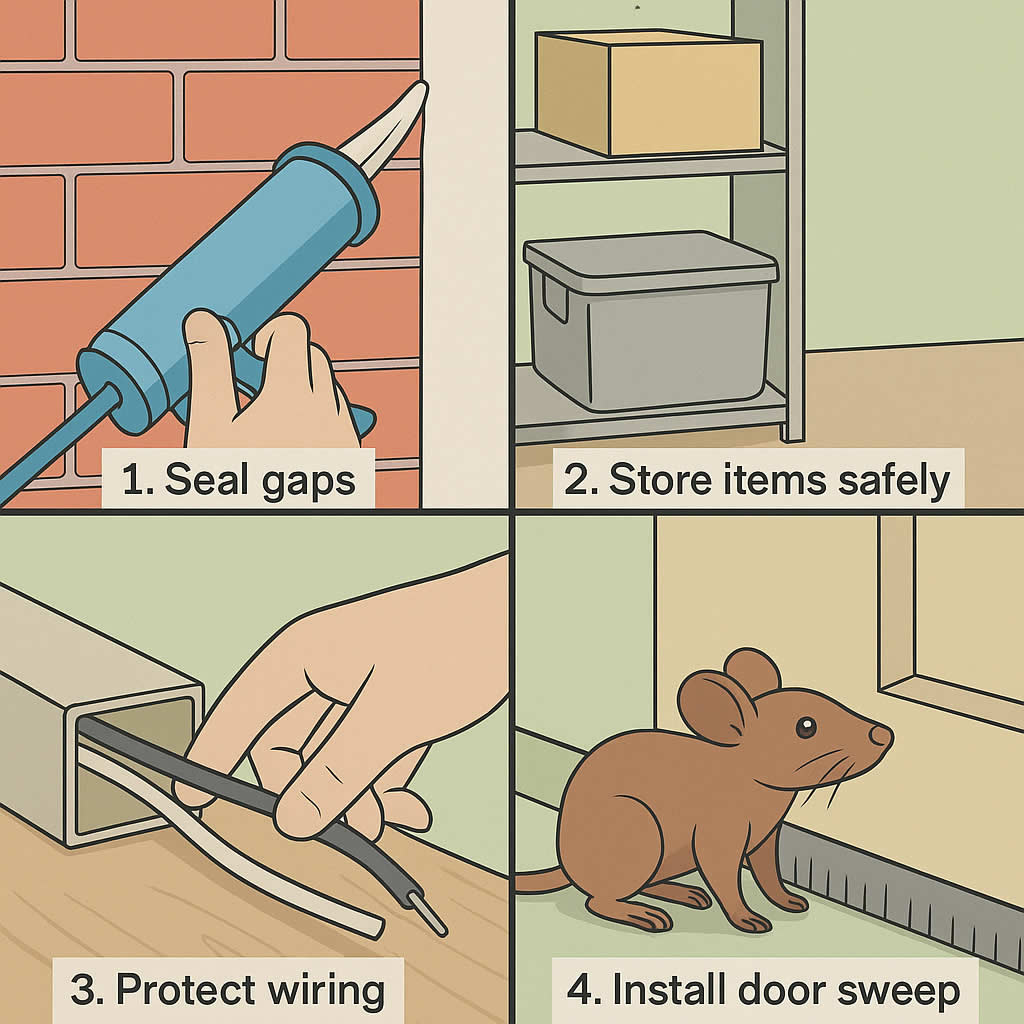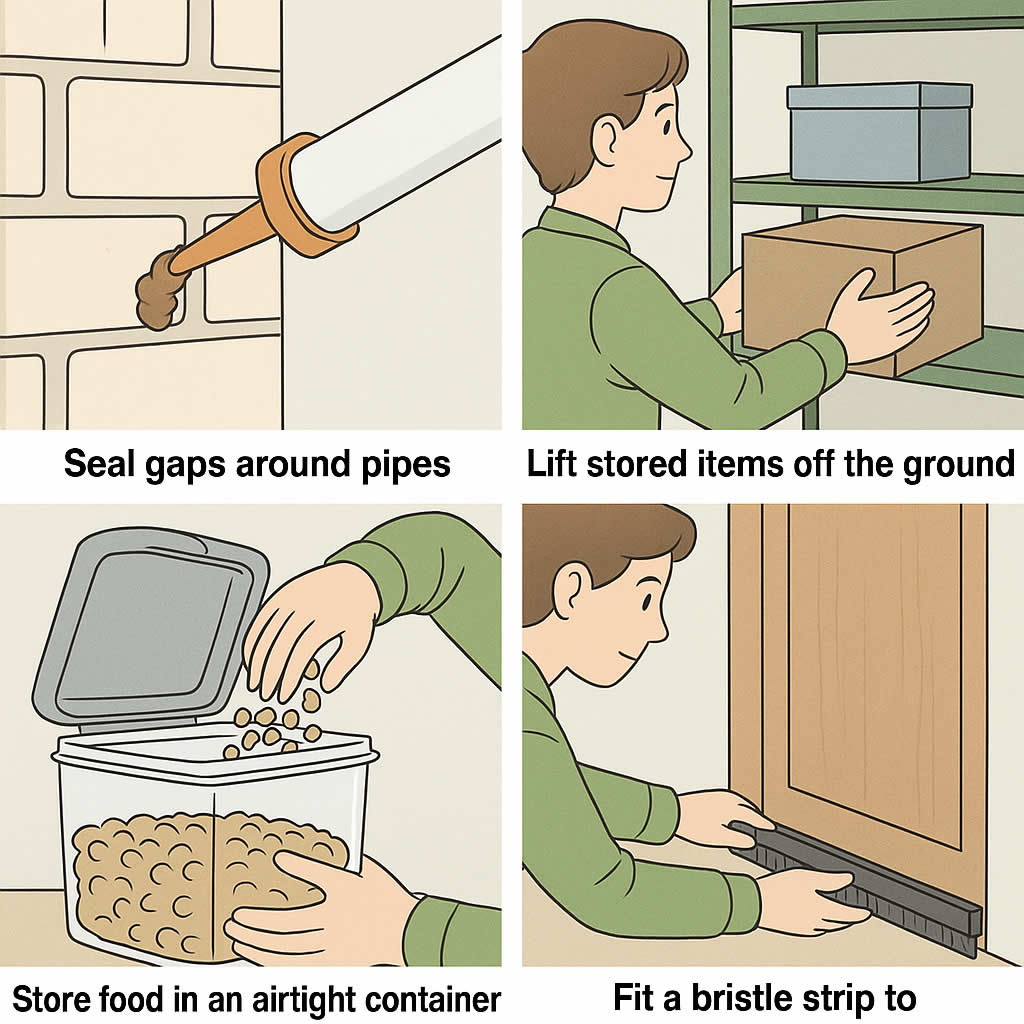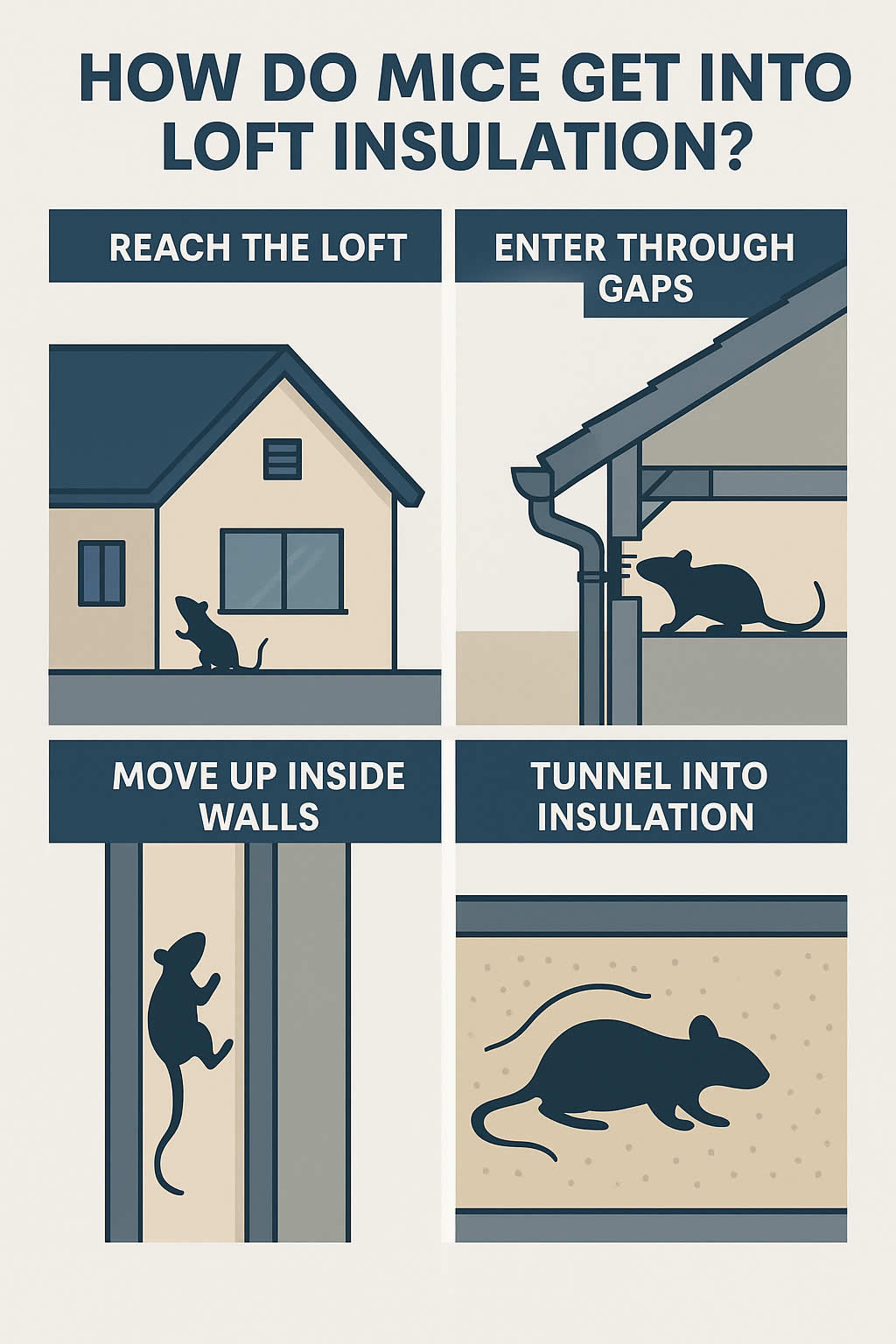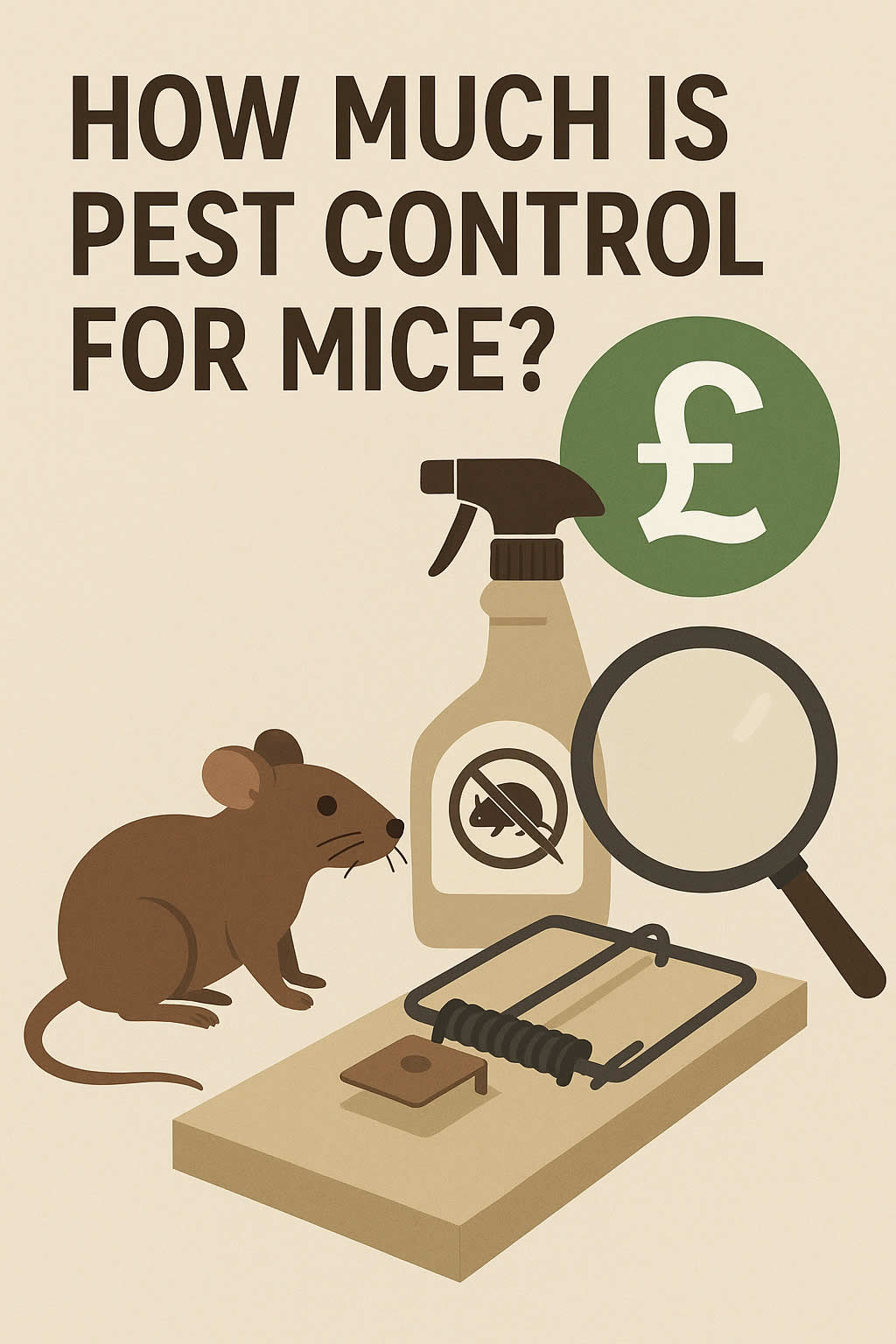Related Queries
ToggleIf you’ve ever had to deal with bed bugs, you’ll know how quickly they can turn your home upside down. They’re sneaky, they’re persistent, and they’re incredibly hard to spot until they’ve already made themselves comfortable. One of the most common worries people have is whether these pests can live in clothing — and if so, for how long.
That question matters more than you might think. It affects how you clean your clothes, where you store them, and how seriously you take travel precautions. It also ties into something deeper: your sense of safety in your own space. The idea that bugs could be hiding in what you wear is unsettling. And when you’re already dealing with bites, interrupted sleep, and stress, it’s one more thing that pushes you over the edge.
So in this guide, you’ll get clear, detailed answers. We’ll walk through whether bed bugs can live in your clothes, how long they can survive there, what signs to look for, and — most importantly — what you can do to get rid of bed bugs. If you’re looking for something straightforward and helpful, you’re in the right place.
Can Bed Bugs Really Live in Your Clothes?
When you think about bed bugs, you probably picture mattresses, bed frames, or cracks in the wall. But what about your wardrobe or the pile of clothes on the floor? Could those be hiding spots too? The short answer is yes, but there’s more to it than that.
Where Bed Bugs Hide in Fabrics
Bed bugs are small and flat, which lets them slip into narrow gaps. In clothing, they usually head for seams, folded edges, pockets, or anything with layers. They’re more likely to settle into a pile of used clothes than freshly laundered, folded ones.
If you’ve left clothes in a corner or in a laundry hamper for a few days, and especially if it’s near your bed, that becomes an easy place for bed bugs to sneak into. They don’t chew through fabric, but they’ll burrow into soft folds where they’re shielded from light and movement.
You might not spot them at first. Bed bugs tend to hide during the day, coming out when they sense body heat or carbon dioxide. So a shirt might look clean, but if it’s been left untouched and near an infested area, it could be a hiding spot.
How Long Can They Survive Without a Host?
Bed bugs feed on blood — that’s the only thing they live on. When they’re not feeding, they’re usually hiding somewhere nearby. So how long can one survive in your clothes without feeding?
On average, an adult bed bug can survive for about 20 to 30 days without a meal in a warm room. In cooler temperatures, they can last even longer — sometimes up to two or three months. So if you’ve worn something and left it in a suitcase, a drawer, or even a coat rack, there’s a real chance they could still be in there waiting.
That said, they prefer places where they’re more likely to find you again quickly. They’ll only stay in clothes if they have no better option or if the clothes stay close to your body — think jackets, pyjamas, or gym gear.
Why Clothing Is Not Their First Choice
Bed bugs are lazy in a way. They don’t want to work hard to find you. They’d rather live in the mattress seams or behind a headboard because you’re right there every night. Clothes, on the other hand, are unpredictable. You might move them, wash them, or hang them somewhere cold. That’s not ideal for a bug trying to survive.
But if you’ve thrown clothes on the floor, or if your wardrobe is right next to your bed, the risk goes up. Clothes can become a bridge — a way to travel between places — or a temporary hideout during the day. So while they’d rather live elsewhere, they’ll use clothing if they need to.
How to Tell If Your Clothes Are Infested
If you’ve started worrying about bed bugs in your clothes, the next step is knowing what to look for. Most infestations start small, and early signs are easy to miss. But if you catch them early, you can avoid a much bigger problem later on.
Signs of Bed Bugs in Your Laundry Basket
Dark spots on fabric are often the first clue. These come from bed bug faeces — tiny droppings that stain fabrics a rusty brown or black. You might also notice pale, empty shells if they’ve shed their skin, or small white eggs that stick to fibres.
Live bugs are hard to spot, but not impossible. Adult bed bugs are reddish-brown and about the size of an apple seed. They’re flat when they haven’t fed and slightly rounded when they have. If you pull apart a pile of clothes and spot movement, take it seriously.
Also, take note of where the basket is. If it’s near your bed or close to the floor, that increases the risk. The same goes for laundry bags, gym sacks, or fabric wardrobes.
Clothes vs Bedding: Which Gets Hit First?
In nearly every case, bedding gets hit before clothing. That’s because you’re in bed for hours each night, which gives bed bugs plenty of time to feed without disturbance. Clothes, by contrast, are usually worn for short periods and are often moved or washed.
Still, clothes do get affected, especially items you wear repeatedly — like dressing gowns or pyjamas. If you’ve left worn clothes near your bed or haven’t washed things properly after travel, bugs might have hitched a ride without you knowing.
If you’re already treating your bed but ignoring your clothes, you’re only doing half the job. Bugs can reintroduce themselves through infested fabrics.
What Bed Bug Eggs Look Like on Fabric
Eggs are often missed. They’re tiny — about 1mm long — and white or slightly transparent. On light-coloured clothing, they blend in. But you can spot them if you look closely along seams, cuffs, or folds.
The eggs are usually laid in clusters. If you see a group of white dots that don’t brush off easily, and they’re in a tucked-away spot, there’s a good chance they’re bed bug eggs. You might also feel a bit of texture where the eggs have been glued to the fabric.
These are incredibly resilient. Washing alone won’t always destroy them — especially if you use a cold cycle.
How to Safely Treat Clothes for Bed Bugs
Once you’ve spotted the signs, you need to act fast. Treating clothes for bed bugs isn’t difficult, but you do have to be thorough. Even one missed item can start a fresh cycle of infestation.
Best Washing and Drying Methods
Heat is your best ally. Washing clothes at 60°C or above will kill bed bugs and their eggs. If the item can’t be washed that hot, tumble drying it on high heat for 30 minutes usually does the job too.
For delicate clothes, consider dry cleaning — just make sure the cleaner knows the item might have been exposed to bed bugs so they handle it correctly.
Don’t just wash what looks dirty. If it’s been in the same room or near infested bedding, treat everything. That includes coats, scarves, gym clothes, and even shoes if they’re fabric-lined.
When to Use Sealed Bags or Storage
Plastic bags and vacuum-sealed storage can be useful if you need to quarantine clothes before or after washing. Sealing infested clothes can stop bugs escaping and spreading.
Once washed and dried, store items in clean bags or bins until you’re sure the infestation is gone. This helps prevent reinfestation while you’re still treating the rest of the house.
Just don’t forget what’s in the bag. Bed bugs sealed away won’t die overnight. You’ll need to keep those items isolated for several weeks if you’re not heat-treating them.
Chemical-Free Alternatives That Work
If you don’t want to use sprays or harsh chemicals, there are other options. Steam is one of the most effective — it penetrates fabric and kills bugs on contact. You’ll need a proper steam cleaner, not a clothes steamer, to get the right heat and pressure.
Freezing also works if you can keep the clothes at -18°C for at least 4 days. That’s colder than most household freezers, so check yours carefully.
Some essential oils like tea tree and lavender may help repel bugs, but they won’t kill them. Don’t rely on them as your main method — use them as a backup or short-term barrier.
How to Prevent Future Infestations in Clothing
Once you’ve cleared your clothes, your focus should shift to prevention. The aim here is to break the cycle and stop the bugs from coming back. With a few habits and changes, you can massively reduce the risk.
Storage Habits That Keep Clothes Bug-Free
Keep clean clothes off the floor. Use sealed bins, zipped fabric organisers, or wardrobe covers to store clothing. Avoid leaving worn clothes near the bed or in piles, especially overnight.
Rotate clothing regularly. Bed bugs prefer still, undisturbed places. If you haven’t worn something in weeks and it’s near an infestation site, it could easily become a hiding place.
Vacuum wardrobes and drawers now and then. Even if you don’t see bugs, this helps remove any eggs or stray bugs that might’ve found their way in.
How to Protect Luggage and Travel Clothes
Hotels, hostels, and even short stays with friends can expose your clothes to bed bugs. Always check the mattress seams, headboard, and skirting boards in unfamiliar rooms before unpacking.
Keep luggage off the bed or floor. Use a luggage rack or even a hard table. When you return home, wash all your travel clothes — even if you didn’t wear them — and inspect your suitcase.
A hard-shell suitcase is harder for bed bugs to hide in than a soft one. And using zip-up suitcase covers can add another layer of protection.
Why Routine Inspections Make a Difference
The sooner you find signs, the easier they are to deal with. Every few weeks, check your wardrobe, drawers, and laundry areas — especially if you’ve had issues before.
Look at the corners of drawers, the edges of hanging clothes, and under wardrobes. Shine a torch into dark spots and check for eggs, shed skins, or live bugs.
If you’ve just had pest control treatment, keep these inspections going for at least a few months to make sure everything’s stayed clear.
Our Final Say!
So how long do bed bugs live on clothes? The truth is, they can survive for weeks — even months — if conditions are right. But clothes aren’t their ideal home. They only turn to fabric when they need a temporary place to hide or a way to get around.
That doesn’t make the risk any less serious. If your home is infested, ignoring your clothing means you could undo the hard work of cleaning your mattress or hiring pest control. But the good news is, once you understand how to treat and store your clothes properly, you can take control again.
You don’t have to live with that creeping feeling every time you open a drawer or put on a jacket. With the right steps, you can clear your clothes, stop the cycle, and make sure it doesn’t happen again.

